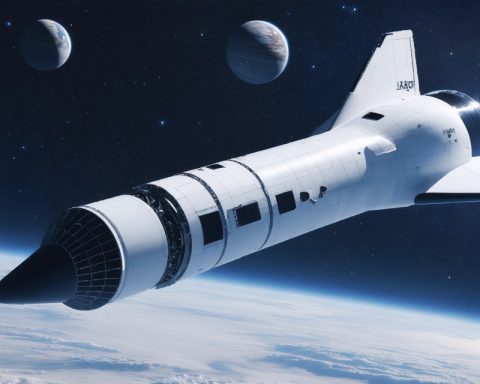For over 4 billion years, Earth’s rotation has been gradually slowing, leading to some surprising results. This slow change has extended our days, with profound implications for life as we know it. A landmark study reveals that this gradual lengthening of days is linked to the oxygenation of Earth’s atmosphere, a development crucial for the existence of complex life.
The study highlights the role of cyanobacteria, which first appeared approximately 2.4 billion years ago. As Earth’s days grew longer, these microorganisms were able to produce more oxygen through photosynthesis. Researchers emphasize that the relationship between day length and oxygen production is vital for understanding the timing of Earth’s Great Oxidation Event, which drastically changed our atmosphere.
The mechanics behind this phenomenon involve the Moon’s gravitational pull, which causes Earth’s rotational deceleration. This has been a slow process, with fossil records suggesting that days were only 18 hours long around 1.4 billion years ago. The slowing of Earth’s spin may also explain why oxygen production from cyanobacteria has evolved over millennia.
Research conducted at Lake Huron’s Middle Island Sinkhole sheds light on how different microbial species interact and compete for sunlight, influencing oxygen levels. By linking these microscopic behaviors to larger planetary changes, scientists are unveiling the profound connections between our planet’s dynamics and the life it supports. The findings, published in Nature Geoscience, open new avenues for understanding Earth’s oxygen history.
The Surprising Connection Between Earth’s Rotation and Oxygen Production
The Dynamics of Earth’s Rotation and Life
For over 4 billion years, Earth’s rotation has been gradually slowing, and recent studies unveil the surprising impacts this has had on the planet’s environment and the evolution of life. This gradual deceleration has extended the length of Earth’s days, which has profound implications for the atmosphere and ecosystems.
Key Discoveries from Recent Research
Recent research published in Nature Geoscience underscores the link between Earth’s extended day length and the oxygenation of our atmosphere, a pivotal moment for the emergence of complex life on Earth. The study points out that cyanobacteria, first appearing approximately 2.4 billion years ago, played a crucial role in this process. As days on Earth lengthened, these microorganisms benefitted from increased sunlight, enhancing their capacity for photosynthesis, thus generating more oxygen.
The Mechanism Behind Day Length Changes
The primary mechanism for Earth’s rotational deceleration is the gravitational pull of the Moon. This interaction has been slowly diminishing the speed of Earth’s spin, leading to longer days. Fossil evidence indicates that Earth’s days were approximately 18 hours long around 1.4 billion years ago. As a direct result of this prolonged span, oxygen production from cyanobacteria has evolved significantly over the millennia, leading up to the Great Oxidation Event that reshaped our atmosphere.
Microbial Interactions and Their Impact
Insights from Lake Huron’s Middle Island Sinkhole reveal how different microbial species interact and compete for resources like sunlight. These interactions significantly influence oxygen levels in various environments. Researchers are now linking these microscopic ecological behaviors to broader planetary changes, revealing how living organisms adapt to and shape their environments over geological timescales.
Implications for Future Research
This line of inquiry opens new avenues for understanding Earth’s oxygen history and its implications for life. By studying the interplay between Earth’s physical dynamics and biological processes, scientists can refine their understanding of how life evolves in response to planetary changes.
Trends and Innovations in Environmental Research
The ongoing study of microbial ecosystems and their environmental interactions has far-reaching implications, especially in light of climate change. Understanding these dynamics may help in developing strategies to mitigate ecological disruptions caused by global warming and habitat loss.
Sustainability and Future Predictions
Investigating the historical contexts of life on Earth can also inform sustainability efforts. As we confront modern environmental challenges, understanding the intricate balance between life and planetary conditions elucidates pathways for preserving biodiversity and fostering resilience in ecosystems.
For further reading on Earth’s atmospheric evolution and ecological interactions, visit Nature for comprehensive research articles and findings.



















